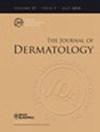Signal Detection of Drug–Drug Interactions Between Topical Vitamin D3 Analogs and Oral Thiazide Diuretics in Hypercalcemia: Analysis of the Japanese Drug Event Report Database
Abstract
Topical vitamin D3 analogs are commonly used to treat psoriasis and are known to cause hypercalcemia. However, whether concomitant use of thiazide diuretics increases this risk remains unclear. We evaluated the association between hypercalcemia and the concomitant use of thiazide diuretics in patients receiving topical vitamin D3 analogs, using reports from the Japanese Adverse Drug Event Report database. Additionally, we explored potential factors associated with hypercalcemia among topical vitamin D3 analogs users. We analyzed reports submitted between April 2004 and November 2024. Reporting odds ratios were calculated to assess hypercalcemia signals, and multivariate logistic regression was performed to identify associated factors. Positive signals were detected for topical vitamin D3 analogs alone and their concomitant use with thiazide diuretics. Age ≥ 70 years, concomitant use of thiazide or loop diuretics, and chronic kidney disease were identified as factors associated with increased reporting of hypercalcemia. These findings suggest a possible drug–drug interaction between topical vitamin D3 analogs and oral thiazide diuretics in the development of hypercalcemia. Although further studies are warranted, clinicians should consider monitoring for the development of hypercalcemia when prescribing topical vitamin D3 analogs to patients taking thiazide diuretics or those with these associated factors.


 求助内容:
求助内容: 应助结果提醒方式:
应助结果提醒方式:


